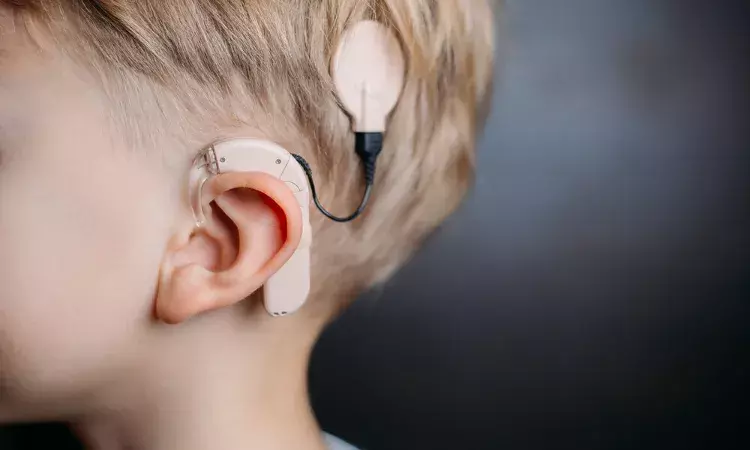- Home
- Medical news & Guidelines
- Anesthesiology
- Cardiology and CTVS
- Critical Care
- Dentistry
- Dermatology
- Diabetes and Endocrinology
- ENT
- Gastroenterology
- Medicine
- Nephrology
- Neurology
- Obstretics-Gynaecology
- Oncology
- Ophthalmology
- Orthopaedics
- Pediatrics-Neonatology
- Psychiatry
- Pulmonology
- Radiology
- Surgery
- Urology
- Laboratory Medicine
- Diet
- Nursing
- Paramedical
- Physiotherapy
- Health news
- Fact Check
- Bone Health Fact Check
- Brain Health Fact Check
- Cancer Related Fact Check
- Child Care Fact Check
- Dental and oral health fact check
- Diabetes and metabolic health fact check
- Diet and Nutrition Fact Check
- Eye and ENT Care Fact Check
- Fitness fact check
- Gut health fact check
- Heart health fact check
- Kidney health fact check
- Medical education fact check
- Men's health fact check
- Respiratory fact check
- Skin and hair care fact check
- Vaccine and Immunization fact check
- Women's health fact check
- AYUSH
- State News
- Andaman and Nicobar Islands
- Andhra Pradesh
- Arunachal Pradesh
- Assam
- Bihar
- Chandigarh
- Chattisgarh
- Dadra and Nagar Haveli
- Daman and Diu
- Delhi
- Goa
- Gujarat
- Haryana
- Himachal Pradesh
- Jammu & Kashmir
- Jharkhand
- Karnataka
- Kerala
- Ladakh
- Lakshadweep
- Madhya Pradesh
- Maharashtra
- Manipur
- Meghalaya
- Mizoram
- Nagaland
- Odisha
- Puducherry
- Punjab
- Rajasthan
- Sikkim
- Tamil Nadu
- Telangana
- Tripura
- Uttar Pradesh
- Uttrakhand
- West Bengal
- Medical Education
- Industry
Cochlear implantation effective in treating children with Pendred syndrome

Cochlear implantation is an effective and successful treatment for severe-to-profound hearing loss in children with Pendred syndrome and for whom traditional amplification aids provide limited benefit, suggests a study recently published in the American Journal of Otolaryngology.
Pendred syndrome is an autosomal recessive disorder that is classically defined by the combination of sensorineural deafness/hearing impairment, goiter, and an abnormal organification of iodide with or without hypothyroidism.
The hallmark of the syndrome is the impaired hearing, which is associated with inner ear malformations such as an enlarged vestibular aqueduct (EVA). The thyroid phenotype is variable and may be modified by the nutritional iodine intake.
Pendred syndrome is caused by biallelic mutations in the SLC26A4/PDS gene, which encodes the multifunctional anion exchanger pendrin. Pendrin has affinity for chloride, iodide, and bicarbonate, among other anions.
However, in the inner ear, pendrin functions as a chloride/bicarbonate exchanger that is essential for maintaining the composition and the potential of the endolymph. While, in the thyroid, pendrin is expressed at the apical membrane of thyroid cells facing the follicular lumen.
Taylor E.Patterson and associates from the University of Mississippi School of Medicine, United States of America examined the outcomes of cochlear implantation in children with Pendred Syndrome.
A retrospective case series of nine pediatric patients with Pendred syndrome undergoing cochlear implantation at a tertiary academic medical center was carried out.
All patients were diagnosed with bilateral mild-to-profound to severe-to-profound sensorineural hearing loss and used hearing aids prior to implantation. Preoperative imaging results revealed that all patients exhibited bilateral enlarged vestibular aqueducts and 8 of 9 had cochlear dysplasia equivalent to Incomplete Partition II.
Despite inner ear malformations, all electrodes were successfully implanted with minimal complications and favorable post-operative audiological outcomes.
As a result, the authors concluded that with early intervention, cochlear implantation allows speech and cognitive development in Pendred children comparable to that of normal hearing individuals, allowing patients to learn in a mainstream educational setting.
Therefore, they further inferred that cochlear implantation is an effective and successful treatment for severe-to-profound hearing loss in children with Pendred syndrome and for whom traditional amplification aids provide limited benefit.
https://doi.org/10.1016/j.amjoto.2021.103087
Dr. Nandita Mohan is a practicing pediatric dentist with more than 5 years of clinical work experience. Along with this, she is equally interested in keeping herself up to date about the latest developments in the field of medicine and dentistry which is the driving force for her to be in association with Medical Dialogues. She also has her name attached with many publications; both national and international. She has pursued her BDS from Rajiv Gandhi University of Health Sciences, Bangalore and later went to enter her dream specialty (MDS) in the Department of Pedodontics and Preventive Dentistry from Pt. B.D. Sharma University of Health Sciences. Through all the years of experience, her core interest in learning something new has never stopped. She can be contacted at editorial@medicaldialogues.in. Contact no. 011-43720751
Dr Kamal Kant Kohli-MBBS, DTCD- a chest specialist with more than 30 years of practice and a flair for writing clinical articles, Dr Kamal Kant Kohli joined Medical Dialogues as a Chief Editor of Medical News. Besides writing articles, as an editor, he proofreads and verifies all the medical content published on Medical Dialogues including those coming from journals, studies,medical conferences,guidelines etc. Email: drkohli@medicaldialogues.in. Contact no. 011-43720751


